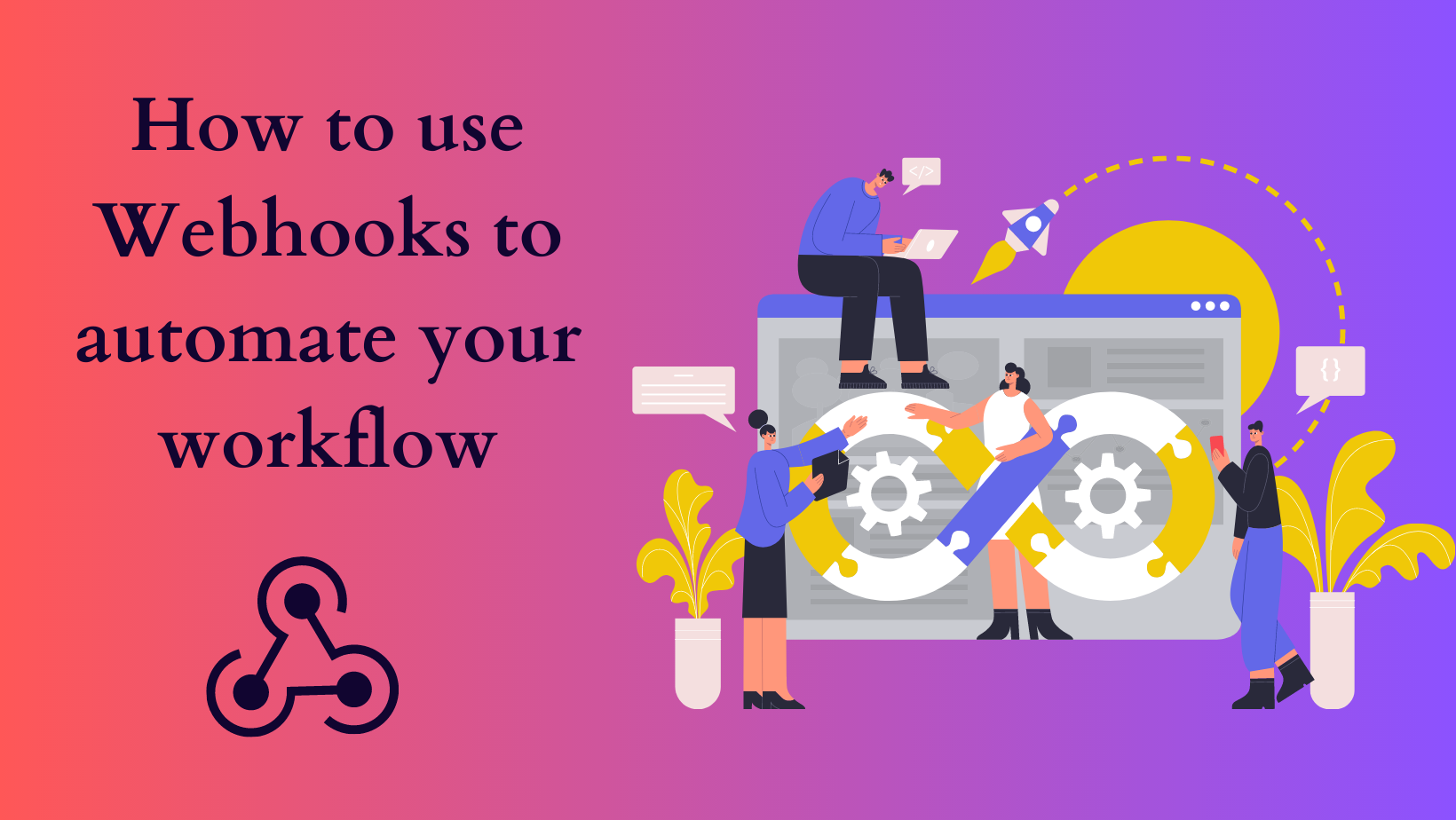How to Use Webhooks to Automate Your Workflow

In today's fast-paced digital world, automation is a key driver for efficiency and productivity. Doing everything manually is impossible for businesses which handles a wide range of customers.
Whereas automation brings numerous benefits to businesses, ranging from increased efficiency and productivity to improved customer experiences, scalability, and data-driven decision making.
Webhooks, a powerful integration mechanism, offer a seamless way to automate workflows by enabling real-time communication and event-driven actions between different applications and systems. By harnessing the power of webhooks, businesses can streamline their processes, eliminate manual tasks, and improve overall efficiency.
In this blog, we will explore the various aspects of using webhooks to automate workflows and how they can revolutionize your business processes.
What are webhooks and how do they work?
Webhooks serve as a bridge between applications, allowing them to communicate with each other in a timely manner. Rather than continuously polling for updates, webhooks enable instant communication by sending notifications or data from one application to another when a specific event occurs.
The receiving application then takes into action based on the information it receives. For example, if you have a form on your website that collects customer information, you can use a webhook to automatically add that information to your CRM system.
Webhooks are triggered by specific events, such as a new form submission or a payment received, and can be customized to fit your specific needs.
Let me list out the 6 ways to automate your workflows using webhooks.
- Identify the Trigger Events:
Begin by identifying the events that will serve as triggers for your workflow automation. These events can range from a new user registration, a payment received, a form submission, a status update, or any other event that requires action within your business process. Carefully analyze your workflow and pinpoint the events that are essential for automation.
2. Choose Webhook-Compatible Services:
Select applications or services that support webhooks and integrate seamlessly with your existing systems. There is a wide array of webhook-compatible services available, including popular platforms such as GitHub, Stripe, Zapier, and many more. Evaluate your requirements and choose services that align with your workflow automation goals.
3. Configure Webhook Settings:
You then have to Access the settings or preferences within the application or service that will send the webhook. Locate the webhook configuration options and provide the URL of your webhook receiver. Additionally, specify the events that should trigger the webhook, and set any required authentication or payload formatting options. Consult the documentation of the sending service for precise instructions.
4. Set Up the Webhook Receiver:
Create a server or an endpoint that will receive the incoming webhook requests. This server must be publicly accessible and capable of handling HTTP requests. Select a programming language or framework that suits your needs, such as Node.js, Python, PHP, or any other language with HTTP handling capabilities. Implement the logic to receive and process the webhook data.
5. Implement Automated Workflows:
Utilize the data received from webhooks to automate your workflows effectively. Leverage the information to generate reports, update records, send emails, synchronize data across systems, or perform any other task that optimizes your business processes. Design your automated workflows to eliminate manual intervention and enhance operational efficiency.
6. Monitor and Error Handling:
Regularly monitor the incoming webhooks and the automated workflows to ensure smooth operation. Implement comprehensive logging and error handling mechanisms to detect and address any issues that may arise. Utilize the tools provided by the webhook-sending services to diagnose and troubleshoot potential problems promptly.
Webhooks are a game-changer when it comes to automating workflows. Implementing webhooks requires careful planning, configuration, and monitoring, but the benefits are well worth the effort.
Embrace the world of automation with webhooks and unlock the potential of seamless workflow automation in your organization.
About us :
MYFUNDBOX is a subscription billing platform that helps businesses handle recurring billing and revenue management operations integrated with payment processing decacorns like Stripe, GoCardless, and Mollie.
MYFUNDBOX provides a single platform to enable customer-preferred payments globally and also is in partnership with Google Cloud.
It was started to help SaaS companies focus on their growth while we make sure they get paid securely and on time.
MYFUNDBOX is integrated with webhooks that automates SaaS business's workflows, so that they improve productivity and enhance customer experience which drives them towards success.
Know more about MYFUNDBOX and its excelling features here.

.png)
